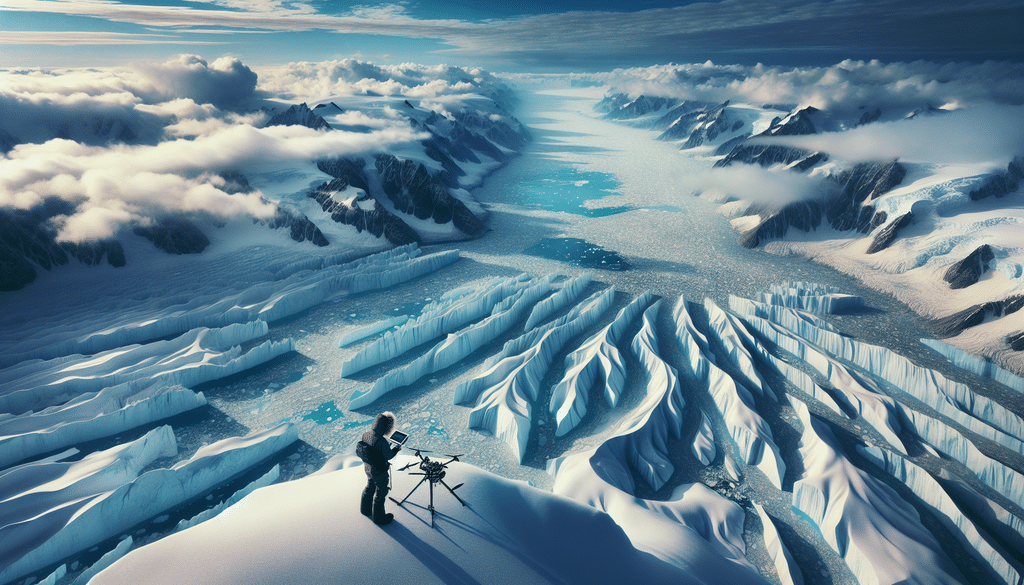The Arctic is a region undergoing rapid transformation due to climate change, and recent aerial surveys have provided vital insights into these shifts. These surveys, utilizing advanced aerial photography and laser technology, have unveiled remarkable changes in pressure ridges, which play a critical role in the Arctic ecosystem. In this blog post, we explore the findings from these surveys, the implications of the changes, and what they mean for the future of the Arctic region.
What are Pressure Ridges?
Pressure ridges are formed when sea ice is pushed together by wind and ocean currents, resulting in elevated formations that resemble waves. They are crucial for understanding climate dynamics and how environmental changes affect the Arctic. Pressure ridges influence :
- Animal Migration: Many Arctic animals rely on consistent ice patterns for migration and hunting.
- Climate Feedback Loops: The structure of sea ice affects heat absorption and retention in the ocean.
- Navigation Routes: They are crucial for shipping and research vessels navigating through icy waters.
Findings from the Aerial Survey
The recent aerial survey conducted by researchers employed top-of-the-line aerial photography and laser scanning to map out the pressure ridges across several regions in the Arctic. Here are some of the critical findings:
1. Decreased Stability of Pressure Ridges
The data revealed a significant decrease in the stability of pressure ridges. Historically, these formations have served as reliable barriers against weather variations, but recent measurements indicate that they are becoming increasingly fragile. The implications of this instability could affect local wildlife and ecosystem resilience.
2. A Shift in Formation Patterns
The aerial surveys demonstrated a noticeable shift in the formation patterns of pressure ridges. With changing wind and current patterns due to warming temperatures, the formations are appearing in new locations, leading to unpredictable conditions for both humans and wildlife.
3. Thinning Ice Layers
Another alarming finding is the thinning of ice layers in traditional pressure ridge areas. This phenomenon could lead to decreased ice coverage, impacting crucial habitats for species such as polar bears and seals that rely on thick ice for breeding and hunting. The thinning ice may also open up routes for warmer water which can cause further ice melt.
Impact on the Climate and Ecosystem
These findings point to profound implications for the Arctic’s climate and ecosystems:
Impact on Wildlife
Changes in pressure ridges directly affect wildlife. The following are potential consequences:
- Habitat Loss: Thinner ice and unstable ridges can reduce denning sites for polar bears and resting areas for seals.
- Food Sources: Altered sea ice could impact the availability of prey for many Arctic species, disrupting the food chain.
- Migration Patterns: Animal migration may shift dramatically, leading to competition for resources among species.
Impact on Local Communities
Indigenous communities in the Arctic who depend on traditional hunting methods will be affected as wildlife patterns change. Local subsistence practices, culture, and food security could face significant challenges. Additionally, the stability of trade routes is crucial for economic activities in the region.
The Future of Arctic Research
Increased Monitoring
The aerial survey underscores the need for ongoing monitoring and research in the Arctic. As climate change accelerates, scientists and researchers must continually document and analyze these transformations to understand their long-term impacts better. Advances in technology, such as drones and satellite imaging, can assist in creating more detailed assessments of these changes.
Policy Implications
As the Arctic continues to change, there are crucial policy implications. Decision-makers will need to consider how these shifts influence:
- Environmental Protection: Create more robust measures to preserve Arctic habitats amidst changing conditions.
- Economic Planning: Consider the implications of new shipping routes and resource extraction as ice patterns change.
- Indigenous Rights: Ensure policies respect and incorporate the knowledge and rights of indigenous peoples living in the Arctic.
Conclusion
The revelations from the aerial survey of Arctic pressure ridges bring to light the real-time impacts of climate change on this fragile ecosystem. As pressure ridges continue to transform, we must pay attention to the implications for wildlife, local communities, and global climate patterns. Continuous research and the implementation of informed policies are essential to navigate these challenges and protect the future of the Arctic.
In conclusion, the Arctic is a vital component of our planet’s climate system, and ongoing research is crucial in understanding its dynamics. The significant changes revealed in the latest aerial surveys emphasize the urgency of addressing climate change and ensuring the preservation of this crucial region for generations to come.





